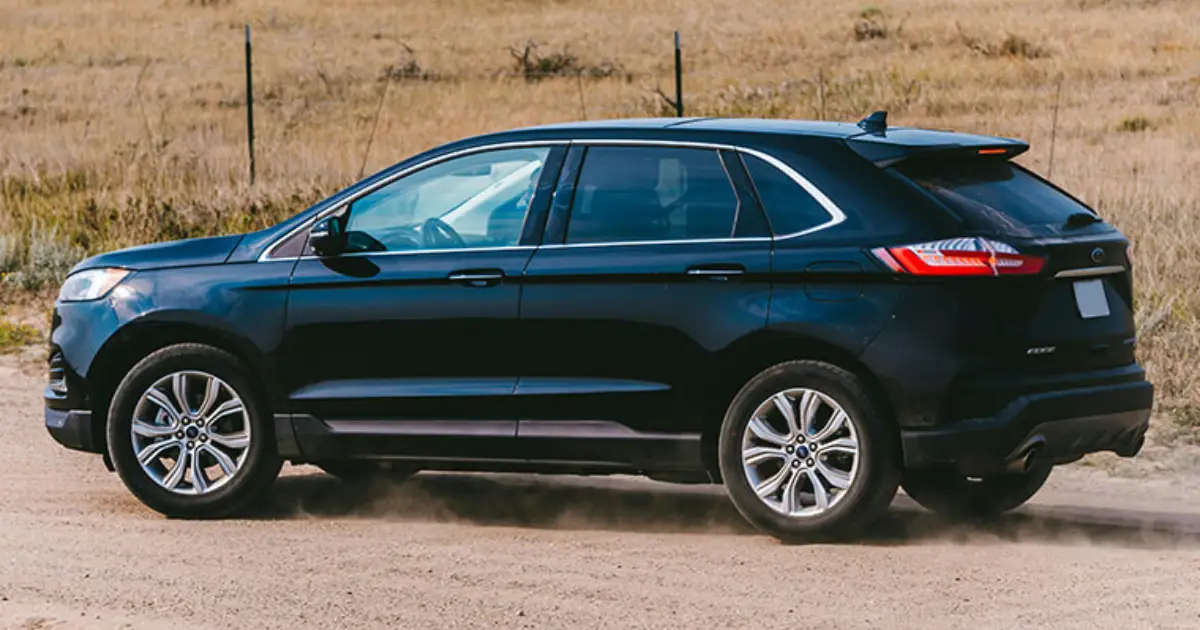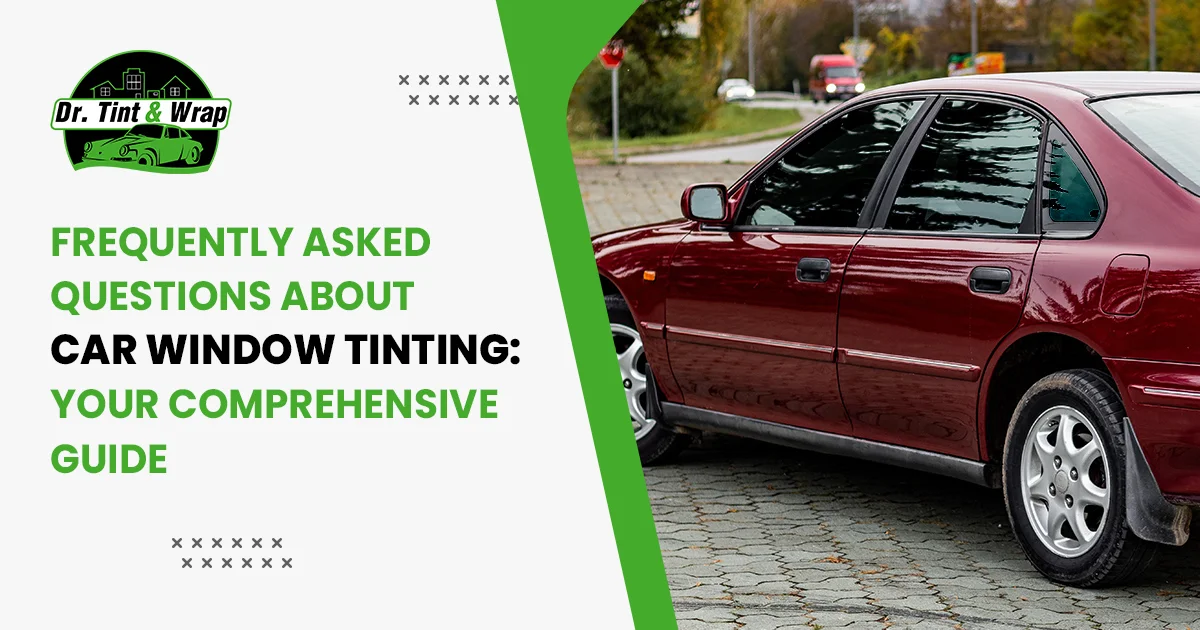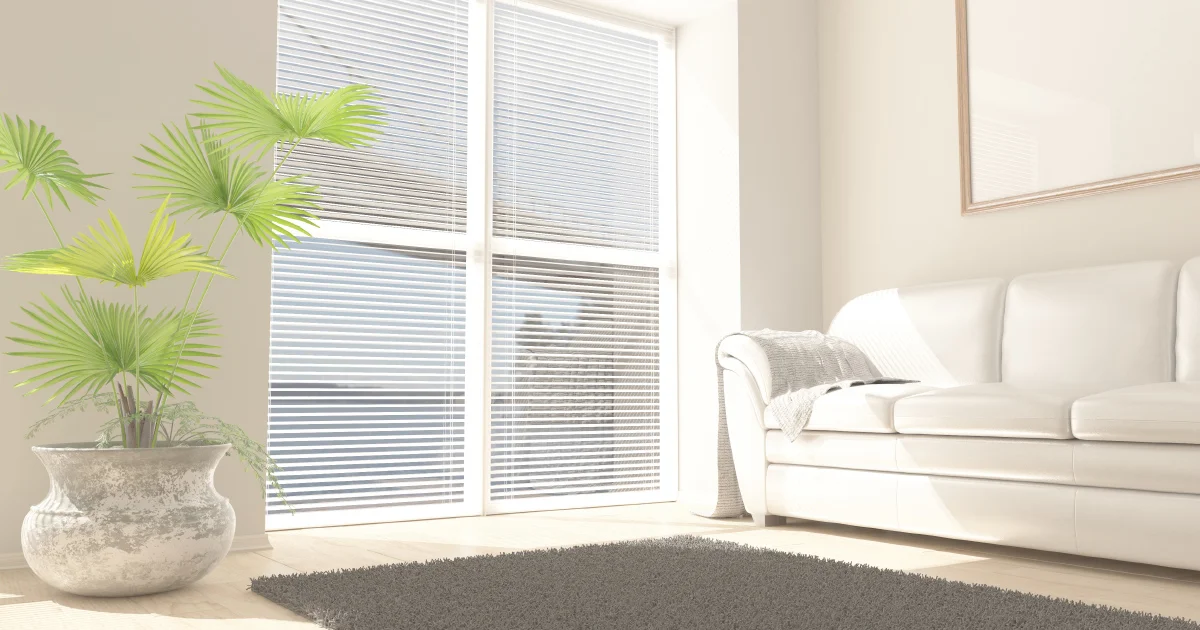
Stay Cool on the Road: How the Right Window Tinting Can Beat the Summer Heat
08 May 2024, By AdminWhether it is your first car or a second buy, a car is always a prized possession. Becoming a proud owner of a sophisticated vehicle is nothing less than an achievement. The story does not end here! If you are a car enthusiast, you will probably love to make some modifications to enhance its aesthetics and value.
Have you ever considered tinting your car windows? If not, this summer is absolutely the perfect time to get it done! Car window tinting is not only about making your car look classy and sophisticated, but it does have potential benefits.
Auto window tinting is becoming predominantly popular this season, and we have listed all the reasons, making it a worthy investment. Let’s check them out.
Auto Window Tinting: The Perfect Score!
Let’s face it; every car does not come from the showroom with tinted windows. Lucky those who already have it! Others have to live with the glaring sun on their face or get a customized service for tinted windows.
Now, why do we suggest you tint your car windows?
Glare Reduction- The most obvious reason to install a black or grey film on the windows is to reduce glare and enable a better of the road and the surroundings. Too much light makes you squint. As a result, you become prone to road accidents. So, whether it is the bright sunlight or the reflection from another vehicle, a tinted window curtails glare.
Block UV Rays- Driving on a hot sunny day means abundant exposure to UV rays. Despite applying sunscreens and sunblock creams, you still are exposed to the sun rays. What should you do? Tint the car windows and enjoy a more comfortable and safer drive! The tint films block UV rays, protecting you from their harmful effects.
Reduces Heat- Car tinting Tauranga is one of the best ways to keep off the heat while you are on the road! Your car’s interior feels cooler and more comfortable. Whether you have to park your car outside in the sun or have a long travel ahead, the interior of the car stays bracing.
Eliminate Health Risks - Often, prolonged driving in a very hot environment increases the risk of several health problems. Migraines, palpitation, and sun tanning are prevalent problems related to high temperatures. Sometimes, you may feel fatigued and exasperated when you have to deal with an uncomfortable surrounding.
Promote Energy Efficiency - What happens when you have a cooler temperature inside the car? The use of the air conditioning system becomes less. As a result, fuel consumption also decreases. It implies that you can save on your pockets! Isn’t it awesome?
Enhanced Protection - Driving a car means you are always susceptible to risks. In such an instance, if there is any physical impact on your car, even if the windows shatter, the glass pieces won’t fall apart. They will stick to the tint film. It saves the occupants inside from injuries.
Safeguard Upholstery - The cost to tint car windows is much less than your car upholstery! We mean that most tears and fading of the car upholstery happen due to excessive exposure to sunlight. Consider the seat covers or the synthetic seat belts, you will notice fading or tears at some point. You can considerably delay the process by tinting the windows and minimizing heat and light exposure.
Better Privacy - Undeniably, tinted windows provide better privacy than clear windows. Though you will be able to see the surroundings clearly, the ones outside will not get a transparent view of the interiors. Therefore, VIPs generally travel in cars with tinted windows.
Increased Comfort - When you have a cooler and more secure environment, naturally it boosts comfort. The heat does not burn your skin, the light stops glaring, and the ambience feels privatized- all of these contribute to enhanced comfort.
Boosted Aesthetics - Finally, how can anyone miss spotting a car with black windows? It looks highly sophisticated and classy. Anyone will turn their head to look at the car! So, elegance and class personified!
Key Takeaways
The benefit of car window tinting is enormous! From increased safety to enhanced aesthetic appeal, you have so many factors to count on! If window tinting was never on your list, we think now is the time you think over it and give it a try. The result will be marvellous!

Frequently Asked Questions about Car Window Tinting: Your Comprehensive Guide
08 May 2024, By AdminCar window tinting has become increasingly popular for its numerous benefits, from enhancing privacy and aesthetics to protecting against harmful UV rays. However, with its rising popularity, there come several questions. In this blog post, we'll address some of the most common queries people have about car window tinting, providing accurate and informative answers to help you make an informed decision.
1.Why should I tint my car windows?
Car window tinting offers several benefits, including UV protection, heat reduction, glare reduction, enhanced privacy, and safeguarding your vehicle's interior from fading. It also adds to the overall aesthetics of your car.
2. Is car window tinting legal?
Yes, but the legal limits vary by state and country. It’s crucial to check local regulations. Most places have restrictions on how much visible light can pass through the tint. Professional tinting services are typically aware of local laws and ensure your tinting adheres to these regulations.
3. Can window tinting prevent my skin from getting damaged by UV rays?
Yes, quality window tints block a significant amount of UV rays, reducing your exposure and minimizing the risk of skin damage. This protection is especially important for people who spend a lot of time driving.
4. Does window tinting interfere with visibility, especially at night?
When professionally installed, window tints should not interfere with visibility, both during the day and at night. It’s essential to choose an appropriate tint shade and have it installed correctly to ensure clear visibility.
5. How long does the tinting process take?
The time taken to tint your car windows depends on the type of vehicle and the complexity of the job. On average, it takes a professional installer a few hours to complete the process. However, this can vary, so it’s best to check with the service provider.
6. Can I wash my car immediately after tinting?
No, you should wait a few days before washing your car after window tinting. This allows the adhesive to cure completely, ensuring the tint adheres properly to the glass. Follow the specific guidelines provided by the tinting professional for the best results.
7. How long will window tinting last?
The lifespan of window tinting varies based on the quality of the tint and the installation. High-quality tints, when professionally installed, can last between 10 to 15 years. Regular maintenance and cleaning also play a role in prolonging the tint’s life.
8. Can I tint my windows myself with a DIY kit?
While DIY kits are available, professional installation is recommended for the best results. Professional installers have the expertise and tools to ensure the tint is applied evenly and without bubbles or imperfections. DIY tinting can often result in subpar outcomes.
9. Will window tinting interfere with my car's electronics or radio signals?
No, high-quality window tints do not interfere with your car’s electronics or radio signals. Modern window films are designed to be non-conductive and won’t disrupt your vehicle's electrical systems.
10. How do I maintain my tinted windows?
Maintaining tinted windows is relatively easy. Clean them with a mild, non-ammonia-based cleaner and a soft cloth. Avoid using abrasive materials that could scratch the surface. Regular cleaning helps maintain the tint's appearance and longevity. In conclusion, car window tinting is a practical and valuable investment for your vehicle. By understanding the process and benefits, you can make an informed decision and enjoy the many advantages that tinted windows offer. Always opt for professional installation to ensure a high-quality and long-lasting result.

Protecting Your Car's Interior with Window Tinting: Tips for Rotorua Climate
08 May 2024, By AdminIf you are a resident of Rotorua or anywhere with a sunny climate, you know how intense the sun can be during the summer months. While enjoying the scenic beauty of the region, it's essential to consider your health and skin protection while driving. One effective way to combat the harmful effects of UV rays and maintain a comfortable driving experience is through car window tinting. In this blog, we will explore the benefits of car window tinting, particularly in the context of Rotorua's sunny weather.
The Need for Car Window Tinting in Rotorua
Rotorua is blessed with stunning landscapes, geothermal wonders, and an inviting climate. However, this also means prolonged exposure to sunlight, and the UV rays can have adverse effects on your health and skin. Let's dive into some reasons why car window tinting is crucial in this beautiful region:
1. Protection Against Harmful UV Rays:The intense sunlight in Rotorua contains harmful ultraviolet (UV) rays that can penetrate your car's windows. These rays can not only cause skin damage but also lead to premature aging and an increased risk of skin cancer. Car window tinting acts as a protective barrier, blocking a significant portion of UV rays and ensuring your skin's safety during daily commutes and road trips.
2. Skin Protection for Drivers: While driving, the left side of your body is more exposed to the sun, making it more susceptible to UV damage. Car window tinting can help protect the driver's skin from excessive UV radiation, reducing the risk of skin-related health issues in the long run.
3. Enhanced Comfort and Reduced Glare: Excessive sunlight and glare can make driving uncomfortable and hazardous, especially during the early morning and late afternoon. Window tinting significantly reduces glare, allowing you to drive with improved visibility and better focus on the road ahead.
4. Heat Reduction: Rotorua's hot climate can lead to uncomfortably high temperatures inside your car, especially when it's parked under direct sunlight. Car window tinting can significantly reduce the amount of heat that enters your vehicle, making your driving experience more pleasant and preventing the risk of heat-related illnesses.
5. Protection for Your Car's Interior: UV rays can also damage the interior of your car over time. Prolonged exposure can cause the dashboard, seats, and other surfaces to fade and deteriorate. Window tinting helps preserve your car's interior, maintaining its value and appearance for years to come.
Choosing the Right Window Tint
Now that we understand the importance of car window tinting in Rotorua, it's essential to choose the right tint for your car. There are various types of window tints available, each with different levels of UV protection, heat rejection, and light transmission. To get the best results, consider the following factors:
1. Visible Light Transmission (VLT): VLT indicates the amount of visible light that can pass through the window tint. Rotorua's regulations may specify the legal VLT limit for car window tinting, so ensure you comply with these guidelines.
2. UV Protection: Look for tints that offer high UV protection, as this is one of the primary reasons for getting your windows tinted.
3. Heat Rejection: For Rotorua's hot climate, choose a tint with good heat rejection properties to keep your car's interior cooler.
4. Warranty: Opt for window tinting products that come with a warranty, ensuring you have support in case of any issues. Professional Installation
To reap the full benefits of car window tinting, it is crucial to have the tint professionally installed. Experienced technicians will apply the tint evenly and without any air bubbles or imperfections, ensuring the best results in terms of aesthetics and functionality.
Car window tinting is not just about enhancing the appearance of your vehicle; it's an investment in your health and well-being. In sunny regions like Rotorua, protecting yourself from harmful UV rays is of paramount importance. Window tinting not only safeguards your skin but also provides a cooler and more comfortable driving experience. If you haven't considered car window tinting before, now is the time to do so. Stay cool, stay protected, and drive safely on the beautiful roads of Rotorua!
Dr. Tint & Wrap Rotorua offers top-notch car window tinting services, providing the best solutions to ensure health and skin protection. Their expert tinting helps block harmful UV rays, safeguarding passengers from potential skin damage and promoting a comfortable driving experience.

Choosing the Right Window Tint for Your Home: A 2023 Guide
08 May 2024, By AdminWhen it comes to enhancing the comfort, energy efficiency, and privacy of your home, window tinting is an excellent choice. In 2023, homeowners are increasingly turning to home window tinting not only for its aesthetic appeal but also for its practical benefits. However, choosing the right window tint for your home can be a daunting task with so many options available. To help you make an informed decision, this blog will answer some essential "wh" questions about home window tinting.
What is Home Window Tinting?
Home window tinting is a process where a thin film is applied to the interior or exterior surface of windows. This film contains various layers designed to provide specific benefits, such as reducing heat and glare, protecting against UV rays, and enhancing privacy.
Why Should You Consider Home Window Tinting?
a.What are the Benefits?
- Energy Efficiency: Window tinting helps regulate indoor temperatures, reducing the need for excessive heating or cooling.
- UV Protection: Tinted windows block harmful UV rays, preventing fading of furniture, flooring, and artwork.
- Glare Reduction: Tinting minimizes glare on screens and surfaces, making indoor spaces more comfortable.
- Privacy: Window films offer varying degrees of privacy, allowing you to control the visibility from outside.
b.How Does It Save Money?
- Reduced Energy Bills: By maintaining stable indoor temperatures, window tinting can lead to lower heating and cooling costs.
- Increased Lifespan of Furnishings: UV protection helps extend the lifespan of your interior furnishings, reducing replacement expenses.
When is the Best Time to Install Window Tinting?
The best time to install home window tinting is during the initial construction or renovation of your home. However, it can be added to existing windows at any time. It's essential to choose a reputable installer who can assess your needs and recommend the right time for installation.
Where Should You Apply Window Tinting?
You can apply window tinting to various areas in your home, including:
- Living rooms
- Bedrooms
- Bathrooms
- Kitchen
- Home offices
- Glass doors and skylights
Consider where you need specific benefits, such as glare reduction in your office or privacy in your bedroom.
How Do You Choose the Right Window Tint?
a.What are Your Goals?
- Identify your primary objectives, whether it's energy efficiency, UV protection, privacy, or all of the above.
b.Consider the Tint Type:,
There are different types of window tints to consider:
- Reflective Tint: Offers privacy and heat reduction but can be highly reflective from the outside.
- Ceramic Tint: Provides excellent UV protection and insulation without affecting visibility.
- Decorative Tint: Adds style and privacy with various patterns and designs.
c.Evaluate Tint Darkness:
- The darkness of the tint affects the amount of light and heat it blocks. Choose a darkness level that suits your preferences and needs.
d.Consult with Professionals:
- Seek advice from experienced window tinting professionals who can guide you in selecting the right tint for your home.
In 2023, home window tinting is a smart investment for any homeowner looking to improve energy efficiency, protect their furnishings, and enhance privacy. By answering the "wh" questions about home window tinting, we hope you're now better equipped to make an informed decision. Remember to consult with experts and consider your specific goals when choosing the right window tint for your home. With the right tint, you can enjoy a more comfortable, efficient, and private living space.
